Warning: Deprecated documentation
You are using the old version of the online help for yunIO.
Make sure to use the documentation within the new HelpCenter for yunIO.
The following section gives a general introduction to working with yunIO. The information described in the following section is a prerequisite for all subsequent sections.
Starting yunIO #
To access the yunIO Designer, enter the designer-URL in a web browser.
The URL pattern to access the yunIO Designer is http://[host]:[port]. Example: http://localhost:8077.
- If the yunIO service runs on a local server, replace
[host]with localhost. - If the yunIO service does not run on the same machine as the browser, replace
[host]with the name or IP address of the host on which the service runs. - After the installation the yunIO Designer is accessible under the default port 8077.
You can configure the port under Settings in the yunIO Designer.
Note: Make sure that the yunIO service is running and that the default port 8077 is not blocked by your firewall.
Adding an SAP Connection #
In the Connection menu you can add new SAP connections and edit or delete existing connections.
- To add a new SAP connection, click [Add Connection] (1).
To edit an existing connection, click the edit icon ( ) of the connection you want to edit.
) of the connection you want to edit.
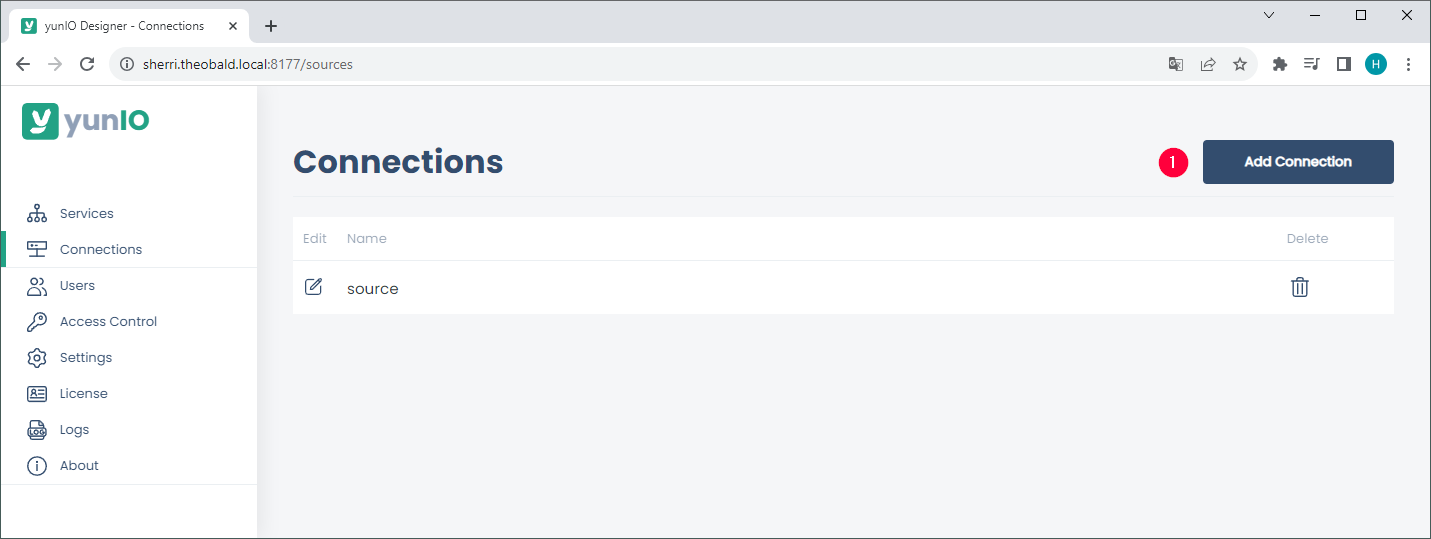
- Enter the connection information of your SAP system under System (2).
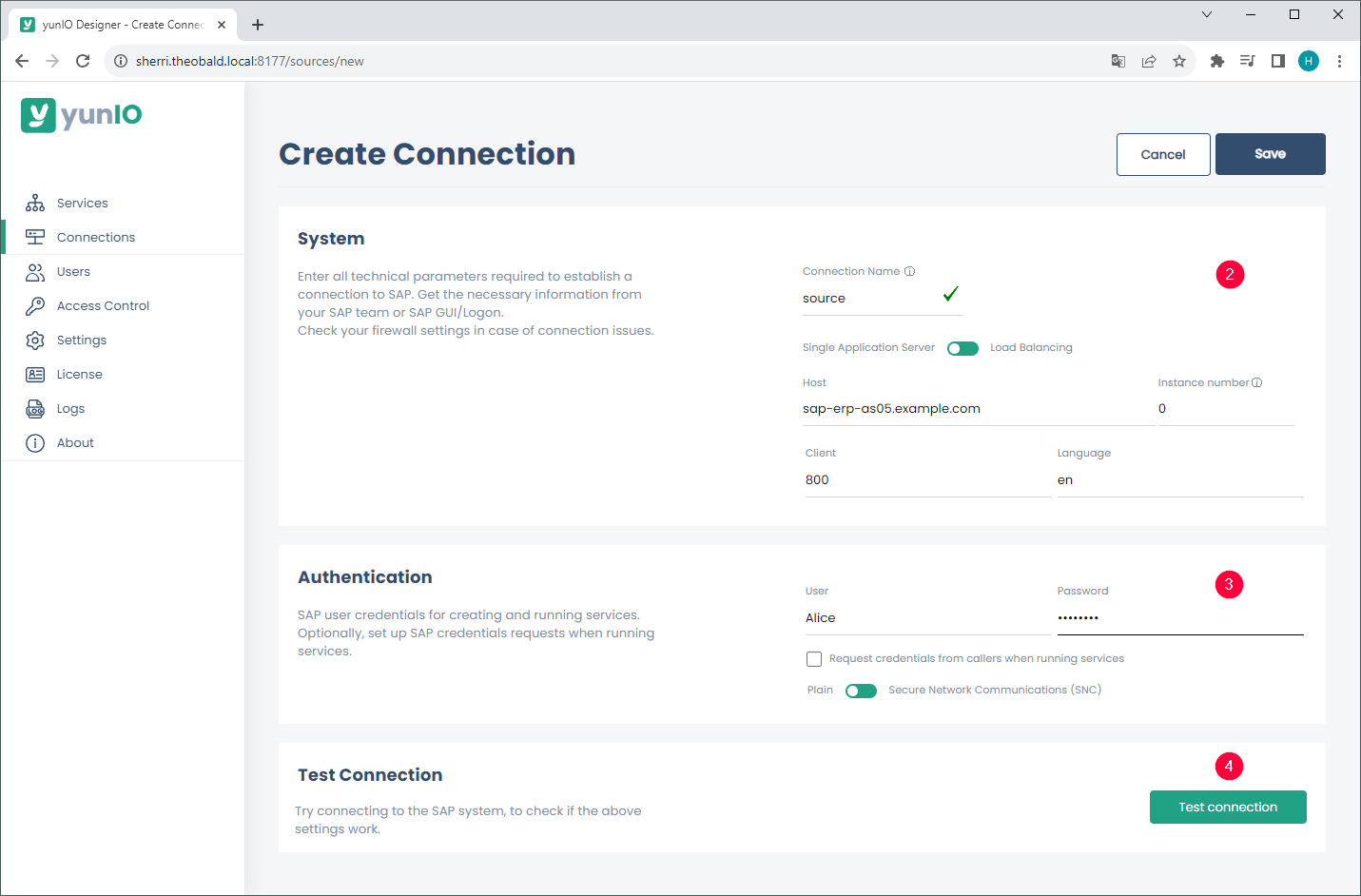
- Enter your SAP credentials under Authentication (3).
- To validate the connection parameters, click [Test Connection] (4). A window with a status message opens.
- Click [Save] to save the connection settings.
For more detailed information on establishing an SAP connection, see SAP Connection.
Creating a Service #
In the Services menu you can create new web services and edit, run or delete existing web services.
- To create a new service, click [Add Service] (1).
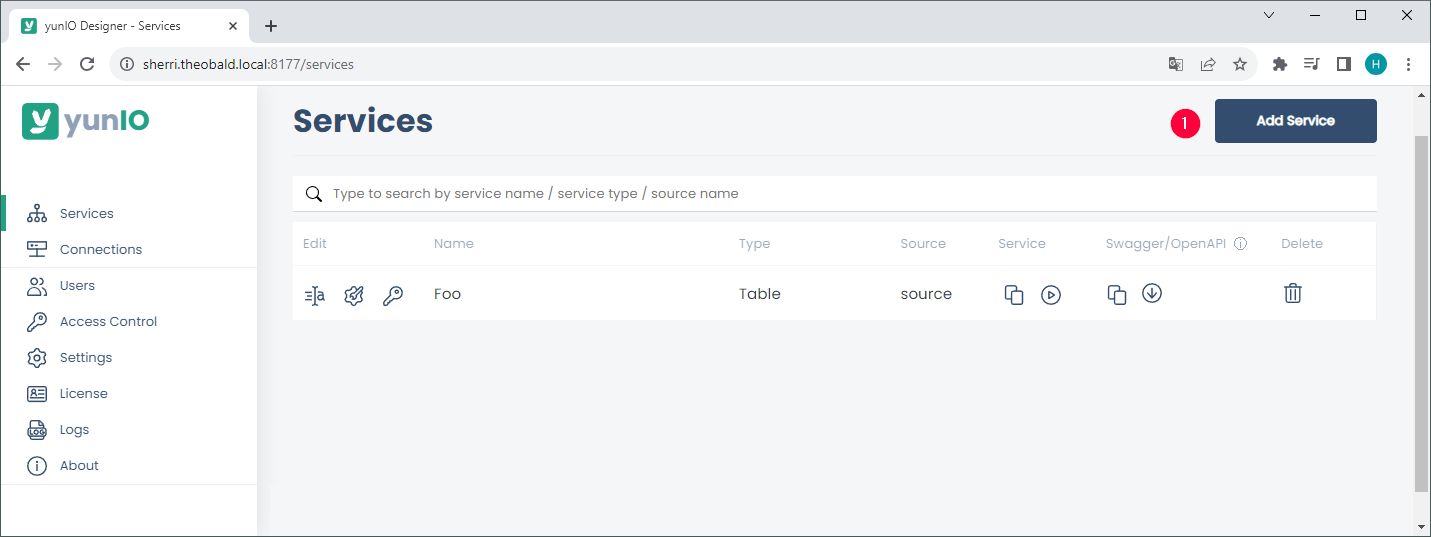
- Enter a name for the service and choose an existing SAP connection under General (2).
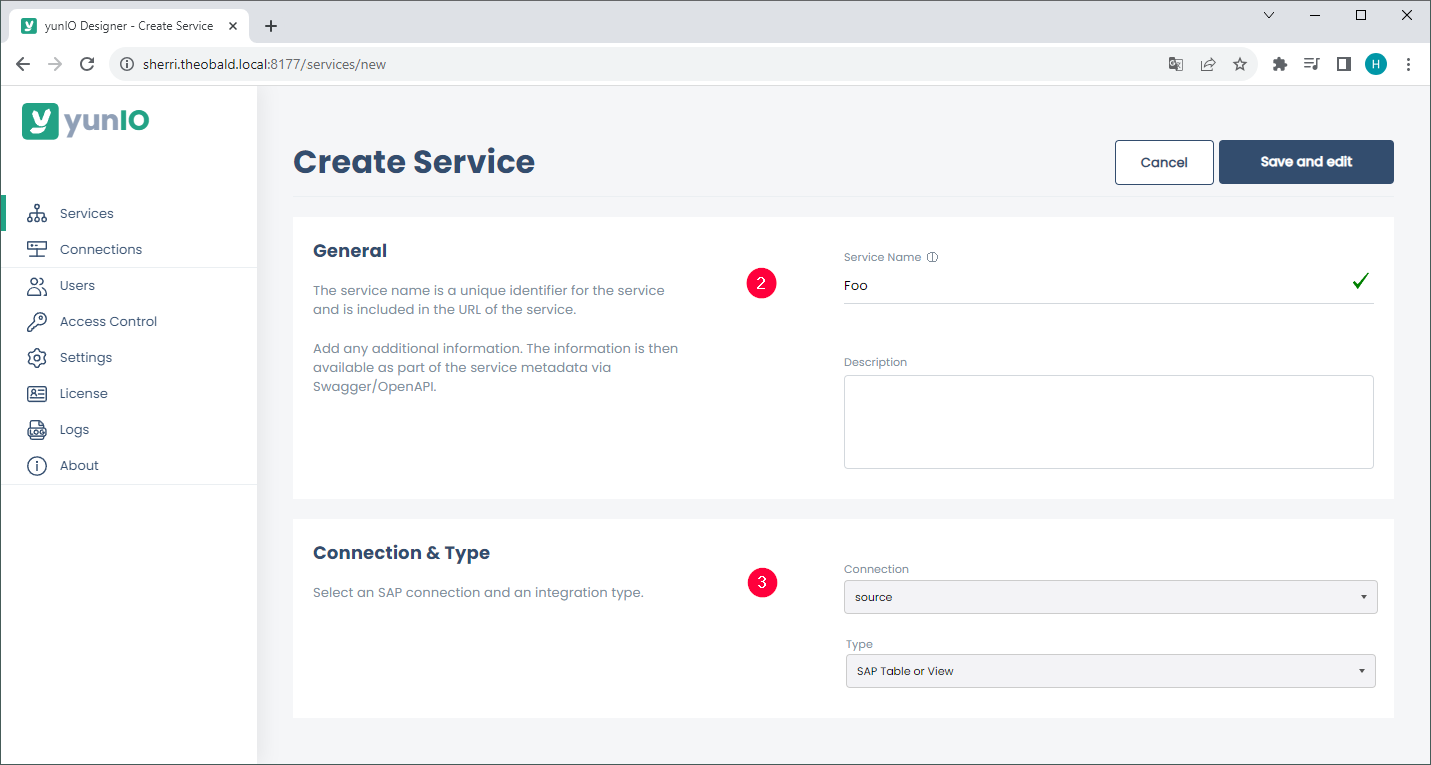
- Optional: Add a short description for the service.
- Choose an Extraction Type (3). yunIO offers the following options: SAP Tables or Views,Function Modules or Transaction.
- Click [Save and edit].
To set up the service, see SAP Table or View, Function Module / BAPI, Transactions or Report.
To edit the name, description and source of an existing service, click the ![]() icon.
icon.
To edit the extraction type settings of the service, click the ![]() icon.
icon.
How to run a Service #
Web services created with yunIO can be integrated into all cloud applications that support REST API/Swagger (OpenAPI), e.g. Power Automate, Nintex, etc.
- To test a service, trigger the URL of the service endpoint or run the service directly in yunIO (1), see Testing a Service.
- To integrate a yunIO web service into a tool that supports Swagger/OpenAPI, copy or download the service definition (2), see Integrating a Service.
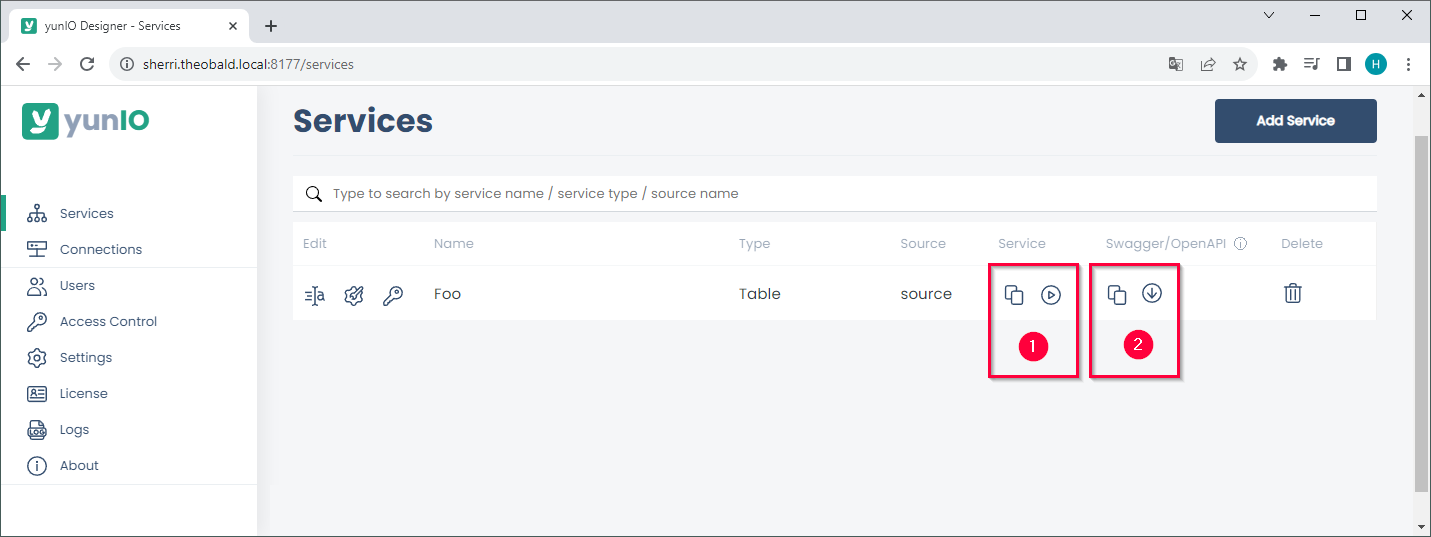
For more information about running services and passing parameters, see Run Services.